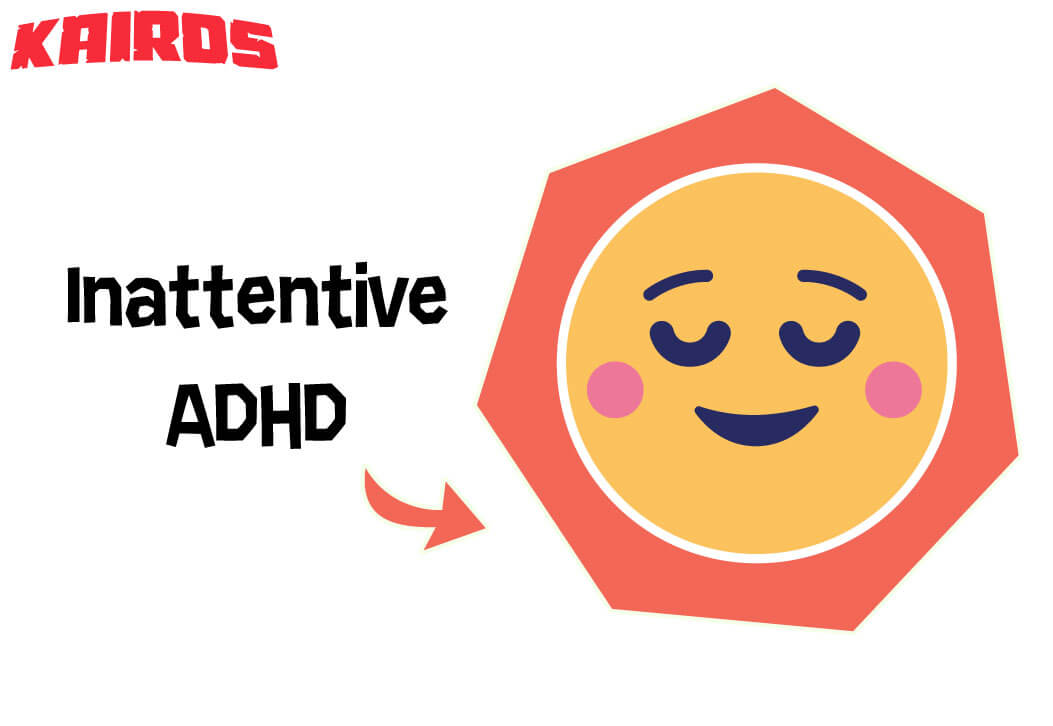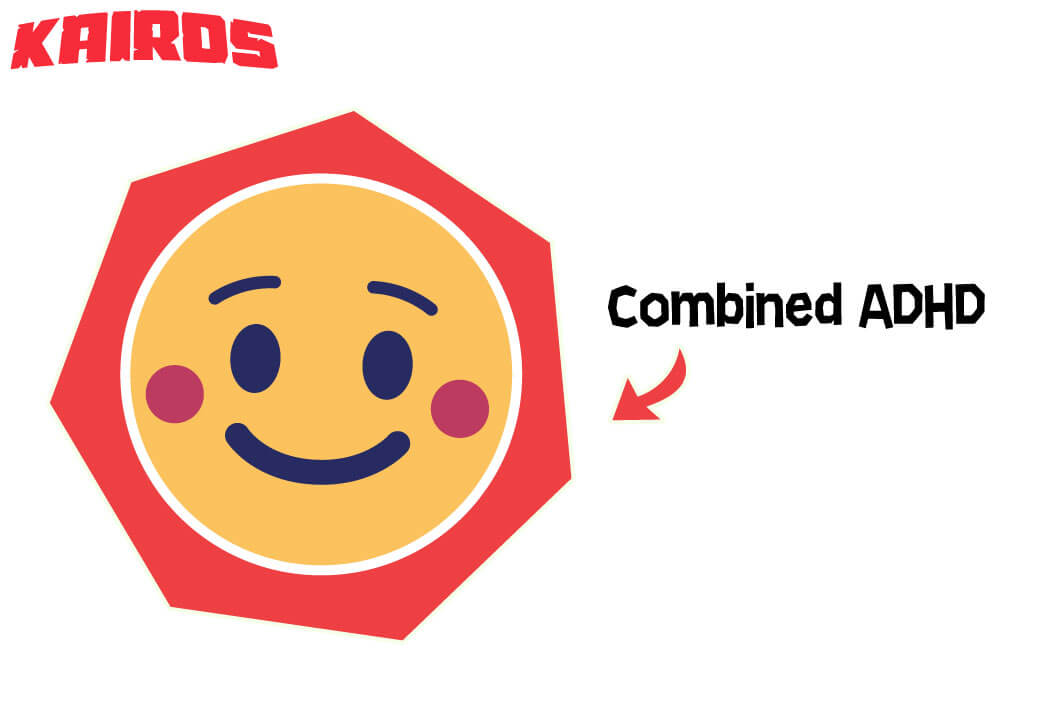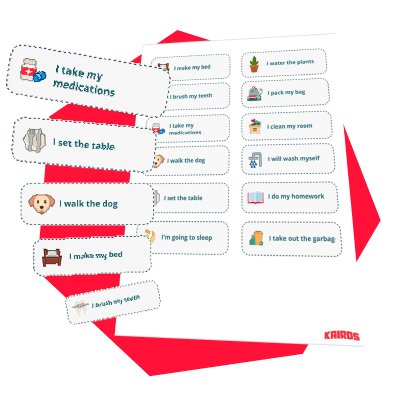People with ADHD that do not have access to professional or outside resources often struggle when trying to control their impulsive behaviors. Although ADHD symptoms are often observed in children, this condition is also present in the adult population. In fact, more than two thirds of young people who have been diagnosed with this disorder in childhood continue to present ADHD symptoms as adults (source).
Attention deficit disorder with symptoms of hyperactivity is manifested by impulsive behavior that becomes a nuisance to the development of an individual. This condition can impede performance at school and work as well as have an impact on interpersonal relationships. In this article we talk about the symptoms of ADHD, the different types of ADHD as well as how it is diagnosed.
What is ADHD?
Attention deficit hyperactivity disorder (ADHD) is a developmental disorder of self-control of neurobiological origin that interferes with the normal psychological development of children. People with ADHD have trouble with concentration and impulsive behaviors, which makes it difficult to achieve daily activities.
Children often suffer from being unable to regulate their behavior, achieve their own goals, and fulfill requests of others. This causes them to feel frustrated, unable to do things, and consequently to develop low self-esteem given their low sense of efficiency.
This is a consequence of the attention deficit disorder itself, while in other cases it can also be associated with other aspects of the individual's personality. Commonly, it represents an obstacle in the achievement of personal goals. If left untreated, this neurological disorder can become a problem conducive to other pathologies.
Free Kid's Daily Routine Chart
What are the signs of ADHD?
ADHD mainly manifests itself through low attention span and impulsivity/hyperactivity.
Regarding inattention, it can be identified when the child:
- Is unable to pay special attention to details
- Has trouble staying focused on tasks or play activities
- Seems to not listen when he/she is spoken to
- Is unable to follow instructions and has difficulty completing daily activities
- Has trouble getting organized with common daily activities
- Avoids assignments that require prolonged mental effort
- Is easily distracted by external stimuli
Regarding hyperactivity and impulsivity, it can be identified when the child:
- Perpetually moves his/her hands or feet
- Gets up in class or in other situations where he/she should remain seated
- Runs and climbs excessively and at inappropriate moments
- Has a hard time playing or participating in quiet activities
- Acts very excited and talks too much
- Says the answers before the questions are asked
- Has difficulty being patient
- Often interrupts other people
- Needs to keep busy constantly
What causes ADHD?
ADHD can have genetic, neurobiological, or unique environmental causes. Various genetic studies demonstrate an association between ADHD and some genes. The neurobiological diagnosis of ADHD takes place in the neurotransmitter known as dopamine and noradrenaline (source).
Neurobiologically, an alteration in the gene responsible for the production of a neurotransmitter (dopamine) could be the cause of ADHD symptoms. Dopamine, being the substance that carries information between neurons, is critical to cognitive processes such as attention and memory.
The neurobiological causes of ADHD are defects in the structure and functioning of the front part of the brain, which is responsible for primary cognitive processes such as planning and organizing behaviors, attention, and inhibitory control.
These structural deficits are also capable of affecting the region of the brain that regulates emotions (limbus) and a part of the nervous system that regulates communication within the brain (ganglia). Since all of these brain regions are interconnected, a deficit in one of them could cause ADHD.
Other studies sustain that there is a familial association with ADHD. A child with ADHD is four times more likely to have a relative with the same issue. Also, a third of parents with ADHD tend to have a child with the same disorder (source).
Here are unique environmental risk factors that are associated with ADHD:
- Long-term exposure to tobacco smoke
- Alcohol or drug use during pregnancy
- Hypertension
- Stress
- Complications during childbirth
- Premature delivery
- Low birth weight
What are the 3 types of ADHD?
There are 3 types of ADHD:
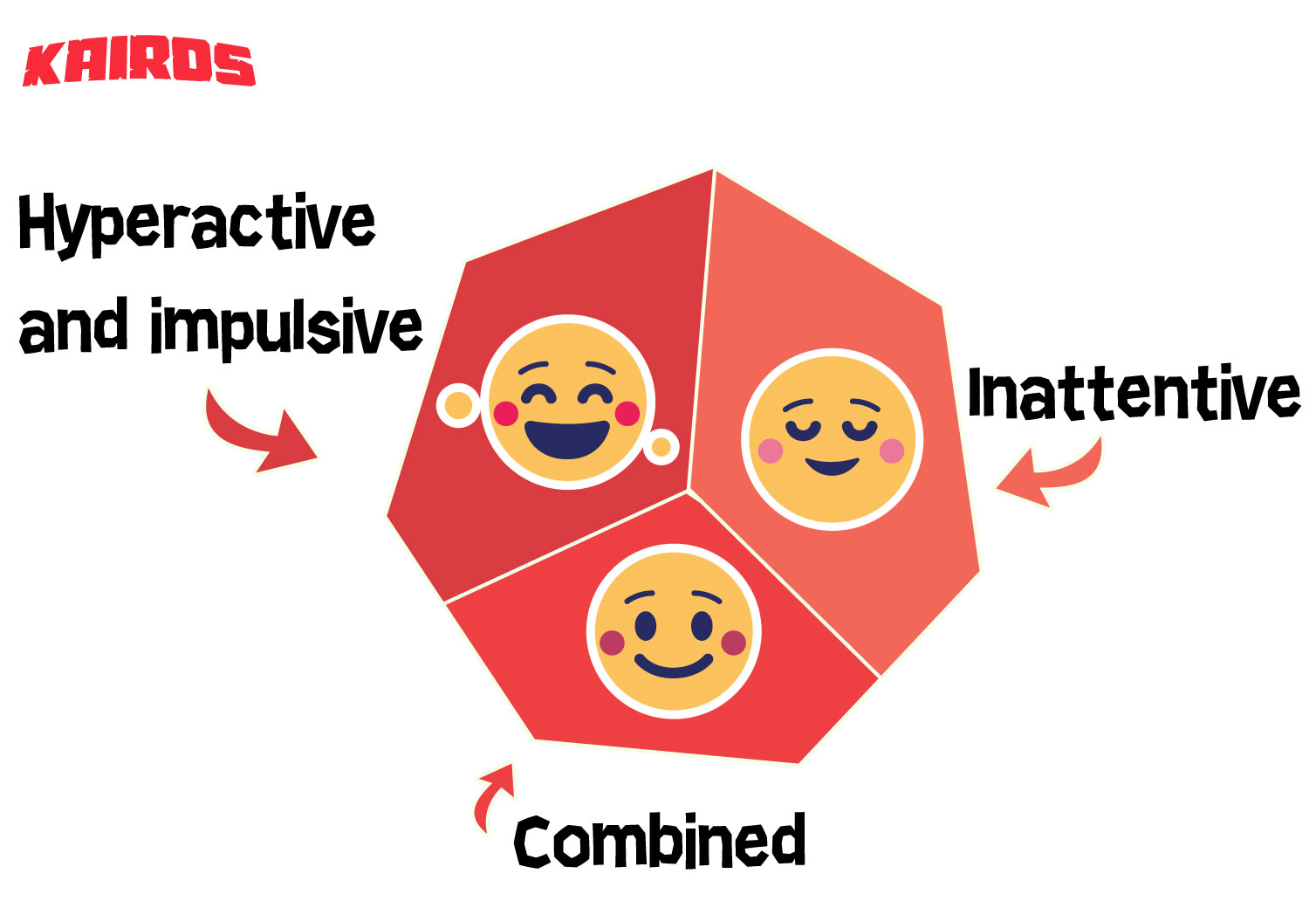
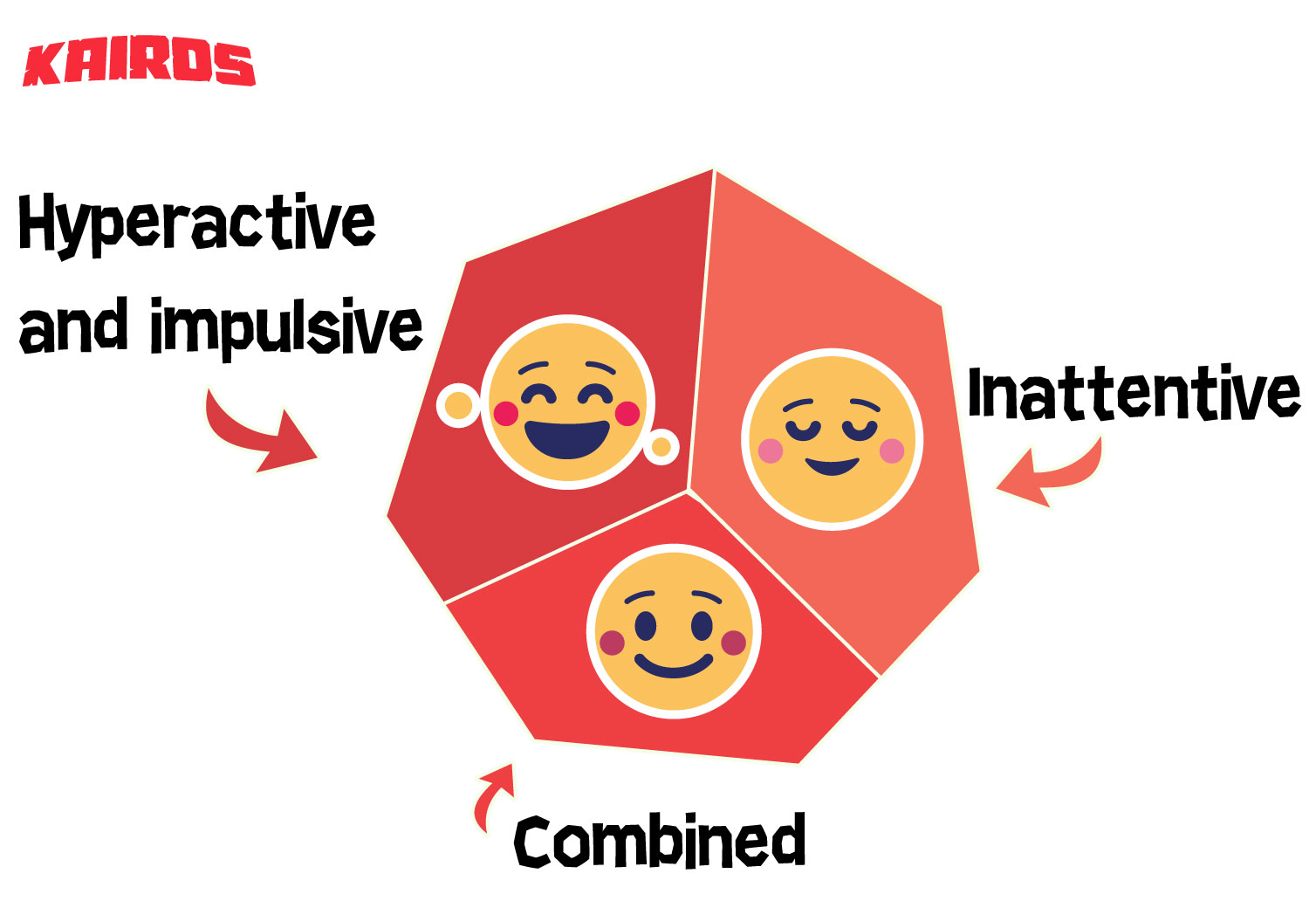
- Inattentive ADHD
- Hyperactive and impulsive ADHD
- Combined type of ADHD
What are the symptoms of each ADHD subtype?
The symptoms of each ADHD subtype are used to categorize the manifestation of the patient’s condition and behavior. People with ADHD are either more inattentive than hyperactive, the inverse, or the two of them are similar in strength.
The inattentive subtype often has difficulty staying focused, following a conversation, and organizing activities. They often avoid or do not want to do tasks that require a long mental effort. They typically lose their belongings and seem unkempt.
On the other hand, the hyperactive-impulsive subtype, which is usually diagnosed less frequently than the other two subtypes, has difficulty playing or engaging in quiet activities. They tend to be impatient, talk excessively, and interrupt other people.
The combined subtype is a combination of the two subtypes mentioned above.
How is ADHD diagnosed?
Doctors or mental health professionals, such as neuropsychiatrists use these techniques to diagnose people with ADHD:
- Interviews about the patient's medical history;
- Neurological tests to be able to evaluate the mental state of the person, as well as motor system, muscular force, coordination, and reflexes;
- Evaluation of cognitive abilities by which a person perceives, records, maintains, and expresses information for daily activities;
- Evaluation of mental disorders and related pathologies regarding anxiety, mood, and nutrition;
- Questionnaires related to patient behavior, filled out by parents and teachers;
- Questionnaires on a global assessment of the severity of the disorder completed by a neuropsychiatrist.
The patient must also do follow-up visits every six months to see if the treatment is adequate or effective.
ADHD in children
ADHD in children has different clinical characteristics according to different age groups.
Kindergarten

- Children do not understand games or remember instructions;
- They fidget during quiet activities, such as eating or watching TV;
- They have impulsive behaviors and are often clumsy;
- They don't ask supervisors for permission to do or take things;
- They tend to get angry easily for foolish reasons.
Elementary / High School

- Academic difficulties;
- Disoriented sense of organization, even at home;
- Tendency to desire the center of attention and lose focus on the activity at hand;
- Takes longer to accomplish tasks;
- Need to hear the same instructions repeatedly.
Does ADHD go away?
ADHD does not go away, but symptoms can be sublimated and people with ADHD learn to live with their condition. The treatment that assists patients the most is a medication that helps calibrate their attention and energy.
ADHD Treatment
ADHD treatments are pharmacological, psychoeducational, and psychotherapeutic interventions supervised by a mental health professional. Psychostimulants are believed to be the drugs that work best for children, adolescents, and adults with ADHD.
Methylphenidate (Ritalin), amphetamines (Adderall), dexamphetamine (Dextrostat, Dexedrine), and atomoxetine (Strattera) are some of the most used drugs for the treatment of ADHD. These drugs are used to strengthen and maintain the levels of attention while restraining the impulsivity of the patient.
It is advisable to combine pharmaceutical treatment with cognitive and behavioral therapies that help children, parents, and teachers organize the daily activities of the student. The most effective cognitive-behavioral programs and treatments for ADHD have several interrelated levels of intervention that involve the child's family, school, and friends.
Another good idea is to incorporate Kairos as an external resource for ADHD treatment to develop the autonomy of students that suffer from it. Kairos is a technological tool that combines an organizational learning tool and a video game to enable children to carry out their daily routines independently.
To make progress in the game, children must carry out tasks that will make it possible for their avatar to obtain new powers needed to access the next level. Kairos is designed to meet the needs of children with ADHD or autism spectrum disorder with a methodology approved by health and education professionals.
